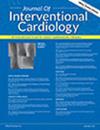Nomogram for Predicting In-Hospital Mortality in Patients with Acute ST-Elevation Myocardial Infarction Complicated by Cardiogenic Shock after Primary Percutaneous Coronary Intervention
IF 1.6
3区 医学
Q3 CARDIAC & CARDIOVASCULAR SYSTEMS
引用次数: 3
Abstract
Background Mortality after percutaneous coronary intervention (PCI) in ST-elevation myocardial infarction (STEMI) patients with cardiogenic shock (CS) remains high. However, the real-world risk factors for mortality in these patients are poorly defined. Objective The aim of this study is to establish a clinical prognostic nomogram for predicting in-hospital mortality after primary PCI in STEMI patients with CS. Methods This retrospective, multicenter, observational study included STEMI patients with CS who underwent PCI at 39 hospitals in Hebei Province from January 2018 to December 2019. A multivariate logistic regression model was used to identify the factors associated with in-hospital mortality. These factors were then incorporated into a nomogram and its performance was evaluated by discrimination, calibration, and clinical utility. Results This study included 274 patients, among whom 179 died in hospital. Sex, random blood glucose on admission, ejection fraction after PCI, no-reflow, and intra-aortic balloon pump (IABP) were independently associated with in-hospital mortality (all P < 0.05). In the training set, the nomogram showed a C-index of 0.819, goodness-of-fit of 0.08, and area under the receiver operating characteristic curve (AUC) of 0.819 (95%CI = 0.759–0.879). In the testing set, the C-index was 0.842, goodness-of-fit was 0.585, and AUC was 0.842 (95%CI = 0.715–0.970). The results indicate that the nomogram had good discrimination and good prediction accuracy and could achieve a good net benefit. Conclusion We established and validated a nomogram that provided individual prediction of in-hospital mortality for STEMI patients with CS after PCI in a Chinese population.急性st段抬高型心肌梗死合并心源性休克患者经皮冠状动脉介入治疗后住院死亡率的Nomogram预测
背景st段抬高型心肌梗死(STEMI)合并心源性休克(CS)患者经皮冠状动脉介入治疗(PCI)后的死亡率仍然很高。然而,这些患者死亡的真实危险因素定义不清。目的本研究的目的是建立一个临床预后图来预测STEMI合并CS患者初次PCI术后住院死亡率。方法回顾性、多中心、观察性研究纳入了2018年1月至2019年12月在河北省39家医院行PCI治疗的STEMI CS患者。采用多变量logistic回归模型确定与住院死亡率相关的因素。然后将这些因素纳入nomogram,并通过判别、校准和临床应用来评估其性能。结果本研究纳入274例患者,其中179例在医院死亡。性别、入院时随机血糖、PCI术后射血分数、无再流和主动脉内球囊泵(IABP)与住院死亡率独立相关(均P < 0.05)。在训练集中,nomogram C-index为0.819,拟合优度为0.08,receiver operating characteristic curve下面积(AUC)为0.819 (95%CI = 0.759-0.879)。在检验集中,c指数为0.842,拟合优度为0.585,AUC为0.842 (95%CI = 0.715-0.970)。结果表明,该模态图具有较好的判别性和较好的预测精度,可获得较好的净效益。结论:我们建立并验证了一个nomogram,该nomogram提供了中国人群PCI术后STEMI合并CS患者住院死亡率的个体预测。
本文章由计算机程序翻译,如有差异,请以英文原文为准。
求助全文
约1分钟内获得全文
求助全文
来源期刊

Journal of interventional cardiology
CARDIAC & CARDIOVASCULAR SYSTEMS-
CiteScore
3.80
自引率
0.00%
发文量
81
审稿时长
6-12 weeks
期刊介绍:
Journal of Interventional Cardiology is a peer-reviewed, Open Access journal that provides a forum for cardiologists determined to stay current in the diagnosis, investigation, and management of patients with cardiovascular disease and its associated complications. The journal publishes original research articles, review articles, and clinical studies focusing on new procedures and techniques in all major subject areas in the field, including:
Acute coronary syndrome
Coronary disease
Congenital heart diseases
Myocardial infarction
Peripheral arterial disease
Valvular heart disease
Cardiac hemodynamics and physiology
Haemostasis and thrombosis
 求助内容:
求助内容: 应助结果提醒方式:
应助结果提醒方式:


